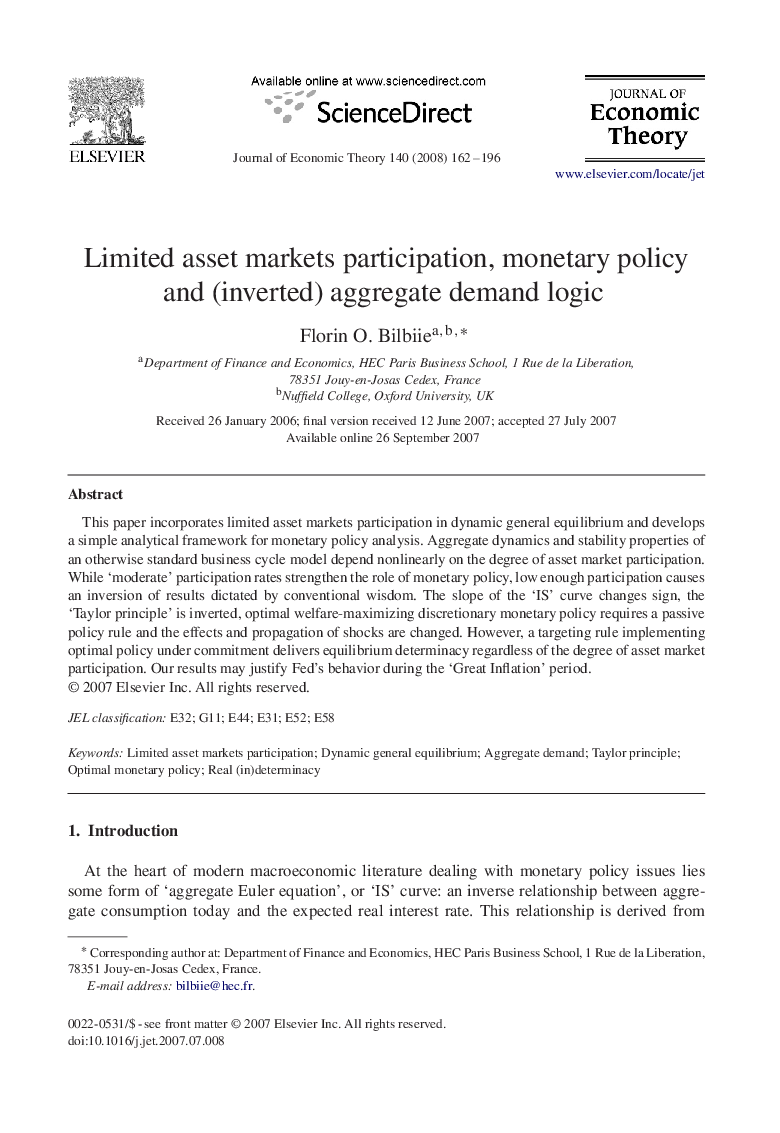| Article ID | Journal | Published Year | Pages | File Type |
|---|---|---|---|---|
| 957682 | Journal of Economic Theory | 2008 | 35 Pages |
This paper incorporates limited asset markets participation in dynamic general equilibrium and develops a simple analytical framework for monetary policy analysis. Aggregate dynamics and stability properties of an otherwise standard business cycle model depend nonlinearly on the degree of asset market participation. While ‘moderate’ participation rates strengthen the role of monetary policy, low enough participation causes an inversion of results dictated by conventional wisdom. The slope of the ‘IS’ curve changes sign, the ‘Taylor principle’ is inverted, optimal welfare-maximizing discretionary monetary policy requires a passive policy rule and the effects and propagation of shocks are changed. However, a targeting rule implementing optimal policy under commitment delivers equilibrium determinacy regardless of the degree of asset market participation. Our results may justify Fed's behavior during the ‘Great Inflation’ period.
